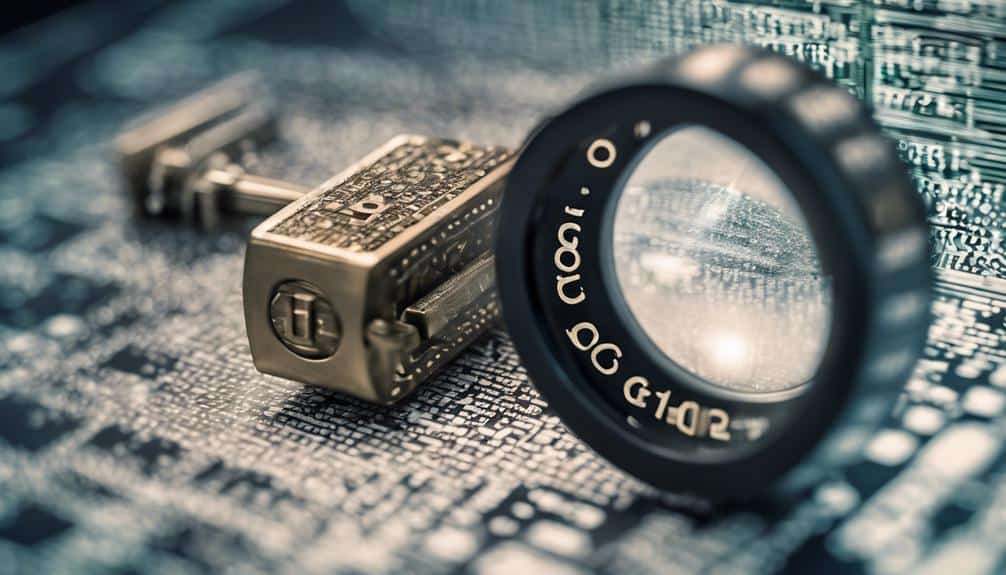Stepping into the sphere of SOC audit reports signifies a significant stride in securing the scaffolding of service organizations. As you navigate through the nuances of these reports, you’ll uncover how they serve as the linchpin in establishing trust and transparency between service providers and their clients.
Whether you’re aiming to assure your customers or seeking a service organization that upholds the highest standards of integrity and confidentiality, grasping the gravity of these audits is indispensable. However, the intricacies involved in choosing the right type of SOC report for your organization’s specific needs can be quite complex.
Stick around to uncover how to make this critical decision with confidence.
Key Takeaways
- SOC reports evaluate controls at service organizations, focusing on areas like security and financial reporting.
- SSAE 18 is the current standard for all SOC examinations, ensuring comprehensive attestation.
- Different types of SOC reports (SOC 1, SOC 2, SOC 3) cater to varying organizational needs and client requirements.
- Obtaining a SOC audit can provide competitive advantages and is often required by clients for assurance on controls.
Understanding SOC Audits
A SOC report provides a detailed review of a service organization’s controls related to financial reporting, security, availability, processing integrity, and confidentiality.
You’re in the driver’s seat when it comes to navigating the complex landscape of service organization controls. This isn’t just about ticking boxes; it’s about genuinely understanding how your service providers manage and protect the data that powers your business.
Diving into a SOC report equips you with the insights to make informed decisions, ensuring your operations run smoothly without unnecessary hitches.
Don’t let anyone dictate the terms of your security and compliance needs. By grasping the essence of SOC audits, you’re taking a significant step towards safeguarding your interests and maintaining the freedom to operate confidently in a world where trust is currency.
SSAE Standards Explained
Understanding SOC audits sets the stage for grasping the critical role of SSAE standards in these examinations. You’re diving into a world where precision meets freedom, and it’s essential to know that SSAE standards are at the heart of SOC reports.
The shift from SSAE 16 to SSAE 18 wasn’t just a number change; it was about enhancing the reliability and thoroughness of these examinations. SSAE 18 isn’t confined to SOC reports alone; it’s a broader umbrella covering various attestation reports, ensuring a wide-reaching impact.
It’s your assurance that the controls and processes under scrutiny aren’t just glanced over but examined with a fine-tooth comb. Embrace these standards; they’re your ticket to demonstrating uncompromised integrity and security in the eyes of those who value freedom just as much as you do.
Importance of SOC Audits
Delving into the world of SOC audits reveals their critical role in assuring control systems to both service organizations and their clients. By undergoing a SOC audit, you’re not just ticking a box; you’re showcasing your commitment to maintaining high standards of control over the data and processes you manage.
This isn’t about jumping through hoops; it’s about freeing yourself from the potential constraints of client audits and paving the way for smoother, more trustworthy business relationships. Imagine bypassing the hassle of individual client audits because you’ve already demonstrated your reliability through a SOC report.
You’re not just keeping up with the pack; you’re setting yourself apart, giving your organization the freedom to focus on innovation and growth, unencumbered by doubts over your controls.
Choosing the Right SOC Report
Having explored the significance of SOC audits, it’s crucial to identify which SOC report best aligns with your organization’s needs.
You’re in the driver’s seat, and the decision isn’t one-size-fits-all. If you’re dealing with financial data, a SOC 1 report might be your lane, ensuring your controls meet the mark for financial integrity.
On the other hand, if you’re all about safeguarding data regarding security, availability, processing integrity, or confidentiality, veer towards a SOC 2 report.
Each choice you make paves the way for not just meeting compliance but also standing out in the competitive market. Remember, it’s about finding the report that grants you the freedom to operate confidently and competitively. Choose wisely.
Miscellaneous SOC Insights
Let’s explore some lesser-known facts and practical tips about SOC audits that could significantly impact your decision-making process. You’re after freedom, right? The kind that comes from making informed choices and having control over your business relationships. Here’s a table that might just stir something in you:
| Insight | Impact |
|---|---|
| No legal mandate | You’re not boxed in; you choose this path for stronger partnerships. |
| SOC 3’s shareability | Freedom to broadcast your security strengths far and wide. |
| CPA expertise requirement | Only the best will do, ensuring you’re not led astray. |
Frequently Asked Questions
What Are the Specific Differences Between SOC 1 Type I and SOC 1 Type II Reports, and When Would an Organization Choose One Over the Other?
You’re wondering about SOC 1 Type I vs. Type II reports. Type I assesses controls at a specific point, while Type II examines effectiveness over time. Choose Type II for ongoing assurance, and Type I for a snapshot.
How Does the SOC for Cybersecurity Differ in Scope and Objectives From SOC 2, Considering Both Focus on Security Aspects?
You’re looking at how SOC for Cybersecurity stands apart from SOC 2. Essentially, SOC for Cybersecurity dives deeper into cybersecurity risk management, while SOC 2 zeroes in on operational controls across specific Trust Services Criteria.
Can an Organization Outside of the United States Undergo a SOC Examination, and Are There Any Special Considerations or Adaptations in the Process for International Entities?
Yes, you can undergo a SOC examination outside the United States, but you’ll need to consider specific international regulations and possibly adapt the process. It’s crucial to work with an experienced CPA firm familiar with these nuances.
What Are the Common Challenges or Pitfalls Organizations Face During Their First SOC Audit, and How Can These Be Mitigated?
You’ll face challenges like understanding controls and documentation during your first SOC audit. Mitigate these by preparing thoroughly, aligning with experienced auditors, and keeping clear, continuous communication. It’ll ease the process and ensure success.
How Do the Trust Services Criteria for SOC 2 Relate to International Standards Like ISO 27001, and Can Compliance With One Influence or Streamline the Process for the Other?
You’re navigating a maze of standards; Trust Services Criteria for SOC 2 intertwine with ISO 27001. Complying with one can pave the way for the other, offering you the freedom to streamline your compliance journey.
Conclusion
As you stand on the precipice of decision, remember, that the path to transparency and trust is nuanced.
Choosing the right SOC report isn’t just a task; it’s a journey toward securing your organization’s future.
The complexities of SOC audits are vast, but within them lies the key to unlocking assurance and confidence.
So, take a deep breath, and step forward. The right choice will illuminate your path, but only if you’re brave enough to venture into the depths of understanding.
The next move is yours. Will you dive in?









